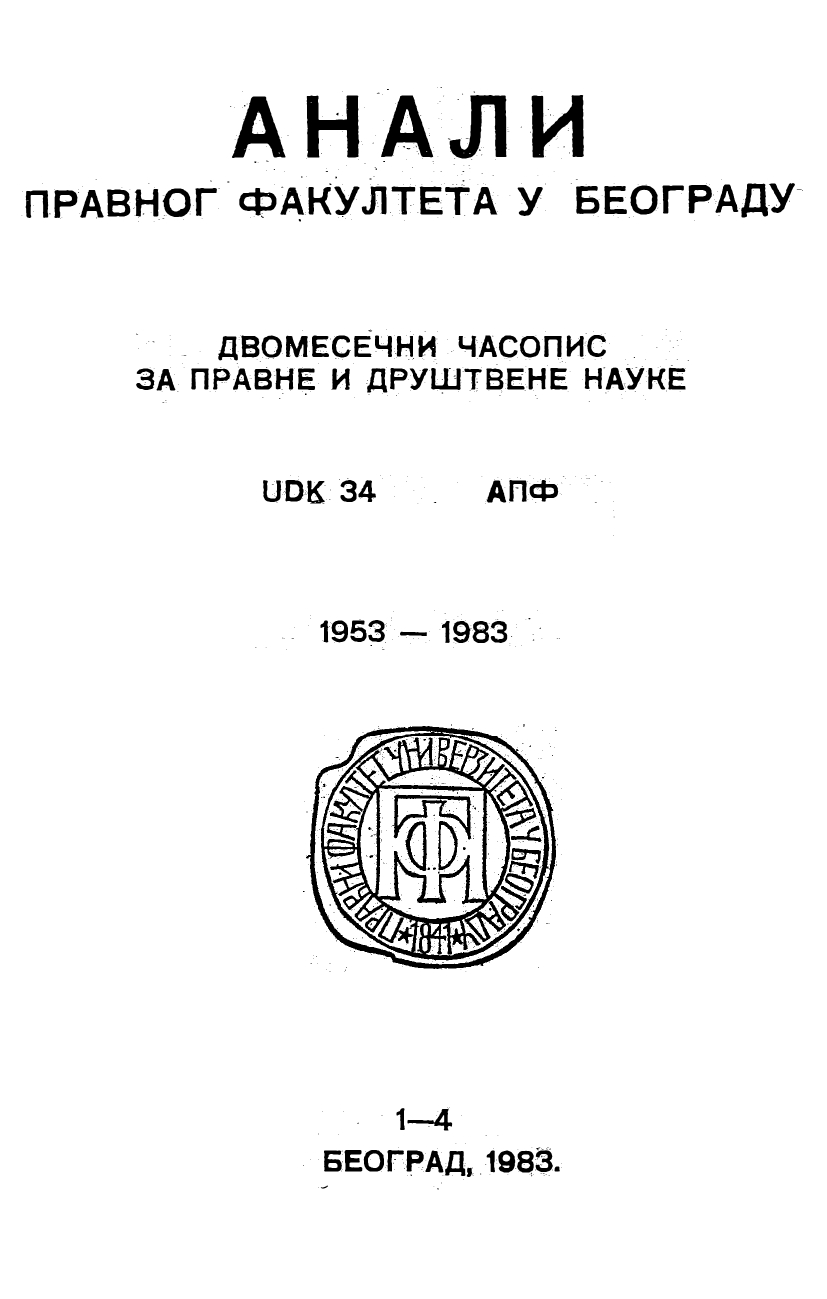НЕКЕ НОВЕ ТЕНДЕНЦИЈЕ У МЕЂУНАРОДНОМ ПРИВАТНОМ ПРАВУ
CERTAIN NEW TENDENCIES IN INTERNATIONAL PRIVATE LAW
Author(s): Milan PakSubject(s): Law, Constitution, Jurisprudence, International Law
Published by: Правни факултет Универзитета у Београду
Summary/Abstract: The author, in the essay, stresses certain differences which have become evident in the new provisions regulating the conflict of that law with the statutory provisions of other countries pertaining to certain relations (The International Private Law Act). These differences are manifested both in contractual and non-contractual relations. It is stated that the new Act has retained the subjective criterion in the application of statutory provisions to contractual relations i.e. the autonomy of the wall of the contractual parties. In the source of the relevant law, the parties are not limited by the existence of any connection between the selected provisions and the contract. But, there have been introduced certain new solutions of conflict of law in the case of contracts in. which there is no autonomy of will of the contractual parties. While in the recent period it had been the practice to make subsidiary application of the provisions of the domicile of the conclusion of the contract, or in certain decisions, the provisions of the court in which the case is heard, the new act has come out in favour of the so-called „theory for the characteristic praestatio”. according to which there is a specific solution of the collision of law for each individual contract, which is being adopted in a growing number of legislatures in the world. For example, in the case of sales contracts the law of the residence, respectively, the law of the domicile of the seller; in the case of a contract of insurance, the law of the domicile of the insurer; in the case of contracts of commission, the law of the domicile of the commissionar. etc.. These new solutions of collision are also applied in the solution of conflicts of law in cases non-contractual liability for caused damage. Namely, in those cases where the causing of damage and the behavior leading to civil law liability have occurred in different countries, the new act has adopted the ..victim theory”, according to which the injured party may have the choice of law (of either country) which is more favourable to him. This represents a deviation from the usual practice in the world requiring the existence of civil law liability not only in the provisions of the country in which the behavior leading to tie damage has occurred but also in the provisions of the country in which the damaging consequence has occurer. In other words solutions rinfa” the table person and not the injured person. The author points to certain legal consequences of these solutions and to the need for the evaluation of their good and bad sides in court practice, in order to make certain (if necessary) elaborations and supplements in the existing provisions.
Journal: Анали Правног факултета у Београду
- Issue Year: 31/1983
- Issue No: 1-4
- Page Range: 549-555
- Page Count: 7
- Language: Serbian

